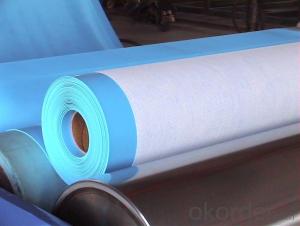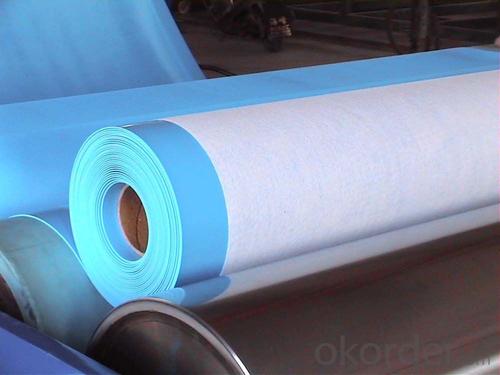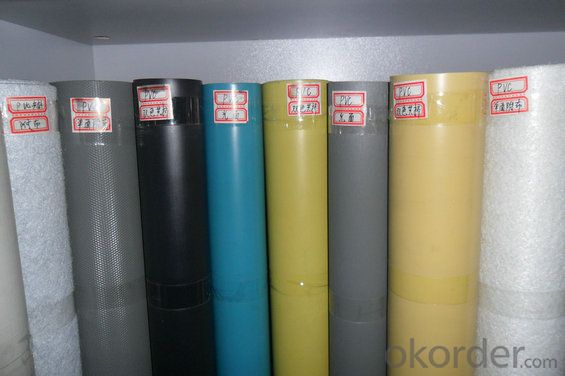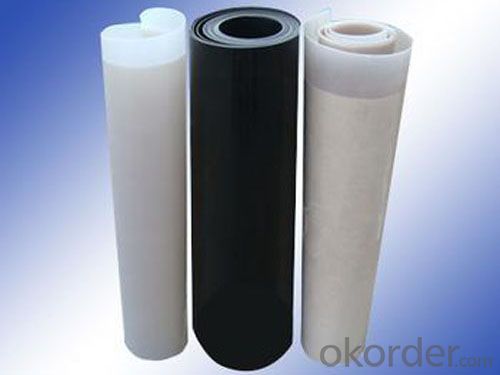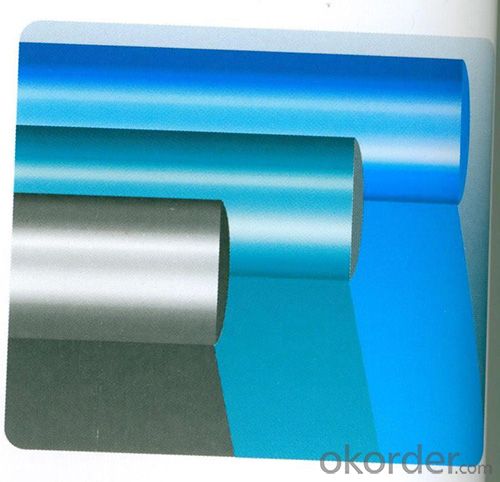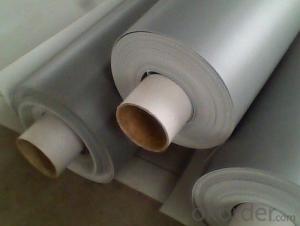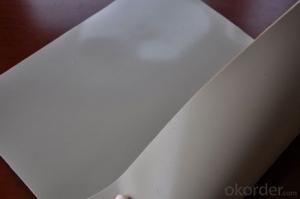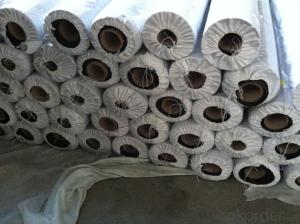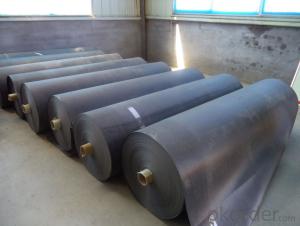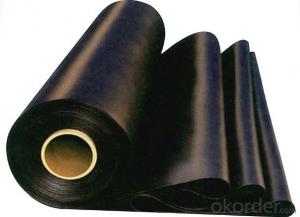Vulcanized EPDM rubber roofing waterproof membrane
- Loading Port:
- Qingdao
- Payment Terms:
- TT OR LC
- Min Order Qty:
- 20000 m²
- Supply Capability:
- 600000 m²/month
OKorder Service Pledge
OKorder Financial Service
You Might Also Like
Product Description of Vulcanized EPDM rubber roofing waterproof membrane:
EPDM waterproof membrane is of high elasticity among high polymer waterproof materials and becomes a world-popular waterproofing material. KEQIANG EPDM waterproof membrane is made from ternary ethylene-propylene rubber, which is designed for waterproofing of exposed and non-exposed applications. KEQIANG EPDM waterproof membrane production adopts the world-advanced equipment of cold feeding extrusion and continuous vulcanization technology.
Features of Vulcanized EPDM rubber roofing waterproof membrane:
·Excellent physical and mechanical performance
· High tearing resistance
· Good deformation adaptability
·High puncture resistance
·High aging resistance
·High UV resistance
Application of Vulcanized EPDM rubber roofing waterproof membrane:
l Roofs, Basement, Toilet
l Industrial and civil building waterproofing
l Geosynthetic liner for swimming pool, channels, irrigation system
l Especially suit for projects with high requirements in durability, anti-corrosion and deformation
Specification of Vulcanized EPDM rubber roofing waterproof membrane:
o. | Item | Unit | Standard Request | |
1 | Variation in Dimension | Thickness | % | ±10 |
Width | % | ±1 | ||
Length | % | No Negative Value | ||
2 | Tensile Strength at Break(Normal Temperature) | Mpa | ≥7.5 | |
Tensile Strength at Break(60ºC) | Mpa | ≥2.3 | ||
3 | Elongation at Break(Normal Temperature) | % | ≥450 | |
Elongation at Break(-20ºC) | % | ≥200 | ||
4 | Tearing Strength | KN/m | ≥25 | |
5 | Water Impermeability(30min) | * | 0.3Mpa Impermeability | |
6 | Bend Temperature | ºC | ≤-40 | |
7 | Heating Expansion/Shrinkage | Expansion | mm | ≤2 |
Shrinkage | mm | ≤4 | ||
8 | Elongation 40%,500x102 | * | No Crack | |
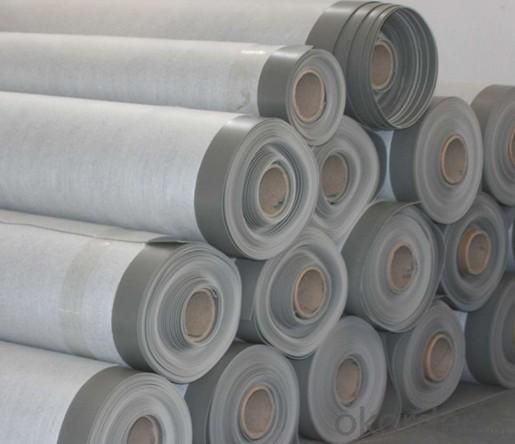

- Q: Can a waterproofing membrane be used in fountains or water features?
- Yes, a waterproofing membrane can be used in fountains or water features. Waterproofing membranes are designed to create a barrier that prevents water from seeping through, making them ideal for applications where water containment is essential, such as fountains or water features.
- Q: Are waterproofing membranes suitable for exterior use?
- Waterproofing membranes are indeed suitable for use on the exterior. These specific membranes are designed to create a barrier against the infiltration of water and are commonly employed in a range of outdoor applications such as rooftops, balconies, and foundations. They are constructed from durable materials capable of withstanding exposure to harsh weather conditions, UV rays, and temperature fluctuations. By preventing water damage, moisture accumulation, and potential structural problems caused by water infiltration, these membranes offer valuable protection. Furthermore, they can be applied to a variety of surfaces including concrete, metal, and wood, making them highly versatile for different outdoor environments. In summary, waterproofing membranes present a reliable solution for safeguarding exterior surfaces from water damage and extending their lifespan.
- Q: Can a waterproofing membrane be used for a residential building?
- A residential building can utilize a waterproofing membrane for its protection. This membrane is a thin material layer applied to the building's exterior walls, foundation, or roof to prevent water from entering the structure. It acts as a barrier against moisture, preventing water damage, mold growth, and enhancing energy efficiency by reducing heat loss. The implementation of a waterproofing membrane in a residential building can be done in multiple areas like basements, bathrooms, balconies, roofs, and exterior walls. It is particularly beneficial in areas prone to water infiltration, such as basements where groundwater seepage may occur or bathrooms where moisture problems can arise from water splashes and steam. Various types of waterproofing membranes are available, including liquid-applied membranes, sheet membranes, and self-adhering membranes. These membranes are designed to be long-lasting, flexible, and resistant to water, ensuring durability and effectiveness in protecting the residential building. By utilizing a waterproofing membrane, homeowners can safeguard their property from water damage, structural issues, and health risks associated with moisture intrusion. It is crucial to seek professional advice to determine the most suitable type of waterproofing membrane for the residential building based on factors like location, climate, and potential sources of water infiltration.
- Q: Are waterproofing membranes resistant to salt damage?
- Waterproofing membranes are generally resistant to salt damage, as they are specifically designed to create a barrier against moisture and water infiltration, offering protection against saltwater as well. Saltwater can be highly corrosive and cause harm to different materials, but waterproofing membranes are typically constructed using materials that can withstand the corrosive effects of salt. These membranes often consist of reinforced PVC, modified bitumen, or EPDM rubber, all of which have proven their durability and reliability in saltwater environments. In fact, waterproofing membranes are commonly used in areas like basements, swimming pools, and marine structures, where they are regularly exposed to saltwater. Thus, it can be concluded that waterproofing membranes are generally resistant to salt damage and effectively shield against saltwater infiltration.
- Q: Can a waterproofing membrane be used for underground fuel storage tanks?
- Yes, a waterproofing membrane can be used for underground fuel storage tanks. A waterproofing membrane acts as a barrier that prevents the penetration of water and moisture into the tank and protects the tank from corrosion and leaks. This is crucial for underground fuel storage tanks as they are vulnerable to moisture infiltration due to their location below the ground. By applying a waterproofing membrane to the tank, it helps to ensure the integrity and longevity of the tank by providing a durable and reliable waterproof seal. It is important to choose a waterproofing membrane that is specifically designed for fuel storage applications to ensure it can withstand the harsh conditions and chemicals associated with storing fuel underground.
- Q: Can a waterproofing membrane be used in high-rise buildings?
- High-rise buildings can benefit from the use of a waterproofing membrane. Incorporating a waterproofing system is highly recommended to safeguard these structures from the harmful consequences of water infiltration. Waterproofing membranes serve as a protective barrier, effectively preventing leaks and moisture damage to the building. They are commonly applied on roofs, basements, foundations, and other areas exposed to water or moisture. The choice of the appropriate waterproofing membrane relies on several factors, including the building's specific design, construction materials, and environmental conditions. It is crucial to seek advice from experienced waterproofing professionals to identify the most suitable membrane system for long-term protection against water-related problems in high-rise buildings.
- Q: Can a waterproofing membrane be used in geotechnical applications?
- Indeed, geotechnical applications can make effective use of waterproofing membranes. These membranes are commonly employed to safeguard structures against water infiltration and are applied to various surfaces such as roofs, basements, and foundations. In geotechnical applications, these membranes serve the purpose of preventing water from seeping into the soil, thus averting erosion and stabilizing slopes. They can be positioned either horizontally or vertically to establish a barrier that hinders water penetration, which proves particularly advantageous in retaining walls, embankments, and dams. Furthermore, waterproofing membranes can be used to regulate water flow and enhance drainage in geotechnical projects. All in all, incorporating a waterproofing membrane into geotechnical applications can significantly enhance the longevity and performance of structures while effectively safeguarding them against water-related issues.
- Q: Can waterproofing membranes be used in swimming pools?
- Yes, waterproofing membranes can be used in swimming pools. Waterproofing membranes are commonly used in swimming pools to prevent water leakage and to protect the structural integrity of the pool. These membranes are typically made of durable materials, such as PVC or EPDM, that are designed to withstand constant exposure to water and pool chemicals. They are applied to the concrete or other pool structures to create a watertight barrier that prevents water from seeping through. Additionally, waterproofing membranes can also provide protection against cracks, corrosion, and other forms of damage, ensuring the longevity and durability of the pool.
- Q: Can a waterproofing membrane be used in commercial buildings?
- Indeed, it is possible to utilize a waterproofing membrane in commercial establishments. Waterproofing membranes serve the purpose of safeguarding diverse sections of a building, encompassing roofs, foundations, and basements, against water infiltration. In the case of commercial buildings, where the likelihood of water harm is heightened due to larger surface areas, increased foot traffic, and intricate architectural designs, waterproofing membranes prove to be a viable solution. These membranes are specially crafted to establish a protective barrier against water, thereby averting leaks, moisture, and potential structural harm. Furthermore, the integration of waterproofing membranes contributes to the longevity of the building by reducing the risk of deterioration resulting from exposure to water. Consequently, the incorporation of a waterproofing membrane system in commercial establishments aids in maintaining a secure and dry environment, safeguarding valuable assets, and optimizing the lifespan of the structure.
- Q: What is the meaning of "channel" and "layer" in the practice of polymer waterproofing membrane?
- In addition, the two did not meet the required thickness of the waterproof layer, according to certain requirements for laminated composite, two waterproof layer can be considered a waterproof. Such as 1.2mm polyurethane + 1.2mm self-adhesive coil (laminated construction rather than separate), can be used as a waterproof, although with two kinds of materials to do a two-story waterproof, and can not be considered two waterproof. The thickness of the laminated composite waterproofing layer can be thinned, and its provisions may be reflected in the new "roofing engineering technical specification" to be published.
Send your message to us
Vulcanized EPDM rubber roofing waterproof membrane
- Loading Port:
- Qingdao
- Payment Terms:
- TT OR LC
- Min Order Qty:
- 20000 m²
- Supply Capability:
- 600000 m²/month
OKorder Service Pledge
OKorder Financial Service
Similar products
Hot products
Hot Searches
Related keywords

